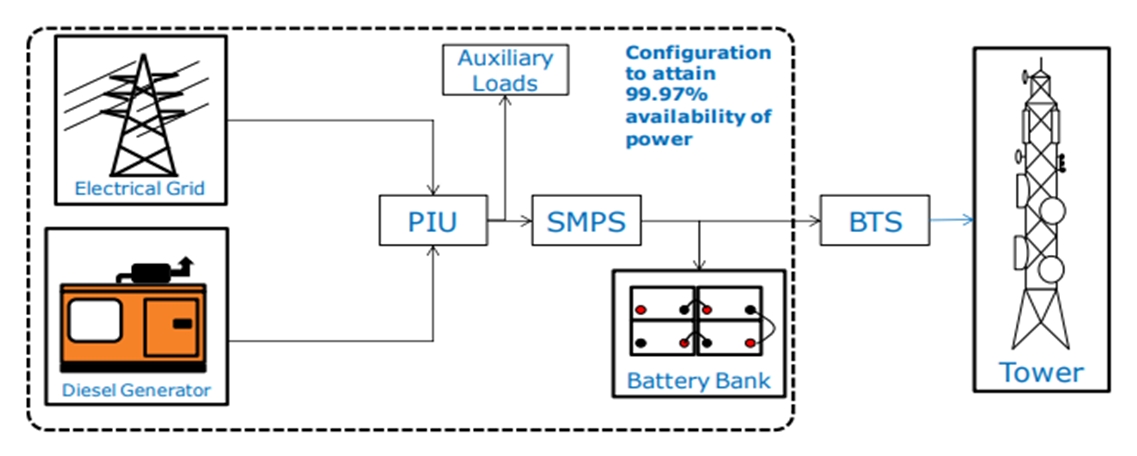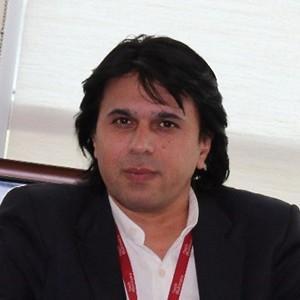Industry Thought Leadership
Digitalization and Sustainability to Revolutionize Telecom Energy Management
November, 2022Global climate change, caused by increased CO2 and greenhouse gas emissions is one of the most serious global concerns. The primary source of these emissions is the energy sourced from the use of fossil fuels and it is no surprise that telecom operators are some of the biggest energy users in the world. Telecom Towers and Data Centers constitute for more than 70% of energy consumption in telecom sector. Overall, the current reality is that telecom operators account for 2 to 3 percent of total global energy demand.
With the rise of 5G technology and the expected increase in network traffic, it is no surprise that telecom energy usage will skyrocket and the carbon footprint it leaves will grow, eventually. As per industry estimates, 5G spectrum bands consume twice as much energy as 4G’s, although they are said to be more energy-efficient per gigabyte. The potential increase in data traffic (up to 1,000 times more) and the infrastructure to cope with it in the 5G era could make 5G to, arguably, consume up to 2-3 times as much energy. This potential increase in energy, coming from a high number of base stations, retail stores and office space, maintaining legacy plus 5G networks and the increasing cost of energy supply – call for action.
Hence, making telecom networks more energy efficient is not only necessary to fight against global climate change, but with energy prices going up it is also a viable source of improved profitability. These changes also represent a great opportunity to reduce expenses, as implementing energy efficiency measures could potentially lower telecom operational costs by up to 20%.
Critical to Switch to Renewable Sources of Energy
To make up for the demand-supply gap, telecom tower operators use diesel generators, batteries, and a variety of power tools. The resulting energy costs alone account for 20-40% of the total network operating costs, affecting the profitability of the operators, thereby making the current use of diesel generators both an environmentally and economically unattractive solution. Hence, replacing lesser efficient fuel sources like Diesel with more efficient sources like Grid supply can lead to enhanced energy efficiency for telecom sector. Therefore, with the climate emergency hitting us hard, it is high time that stakeholders across industries adopt sustainable sources of energy to drive inclusive growth.

Fig. A Typical Telecom Tower site
Green Energy to Improve Profitability
At a typical cell tower, the power demand is determined by the number of base transceiver stations (BTS5) housed. The power demand ranges from 1 kW to 8.5 kW where more than 80% of these configurations have a demand of less than 3.5 kW. To ensure power availability of more than 99.95%, tower owners’ backup the electrical grid with a combination of batteries and diesel generators.
Actions to Take Today
There isn't a magic bullet for lowering exorbitant energy usage in telecom networks. There are, however, steps operators can take to reduce the power they use and shrink their electricity bills. The most obvious and widely used solution is to switch all DC (Direct Current) power systems at access sites to high-efficiency rectifiers.
Replacing legacy DC power systems with newer, high-efficiency models can improve energy efficiency by 5-6% as high-efficiency rectifiers are smarter and better able to manage energy than legacy systems. However, operators often choose to ignore these features in favor of static operation.
It is imperative today that every provisioning decision at 5G site retrofit or new deployment should be made with energy efficiency at the top of the mind. This should be the baseline expectation of operators everywhere.
It’s Now or Never
By 2040, the telecom industry could be responsible for up to 14% of the world's CO2 emissions, according to an industry report. It is high time that we make it our collective goal to save our environment by leveraging technology to combat climate change and scaling up the use of renewable energy.

